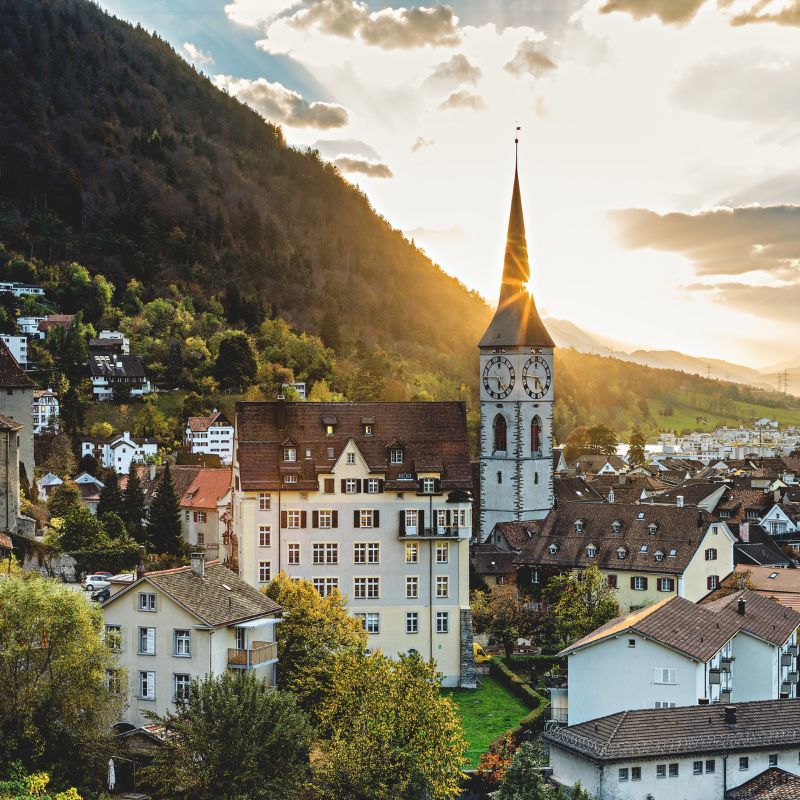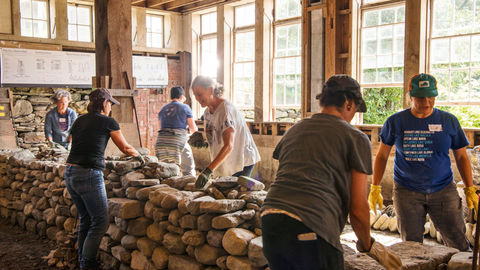
At an all-women stone-wall building workshop in Vermont, Travel+Leisure India & South Asia’s contributor discovers a tradition as rich in camaraderie as it is in craftsmanship. By Amy Waldman
Stone walls are a landscape feature you take for granted until you try to build one. This thought came to me as I attempted to heave a stone the size of a snowshoe and the weight of a small child five feet off the ground. I was near the end of a day of wall building. For eight hours, 16 of us, all women, had hauled and lifted some 24 tons of stone. My will was unflagging. My arms were not.
I had no previous experience in building a stone wall—or any prior inclination to learn how. But after hearing about a course in the subject offered by the Stone Trust, in southern Vermont, I decided to sign up. It was 2021, and the country felt unsettled. I wanted to put my hand on something solid, to make a material connection to America’s past.
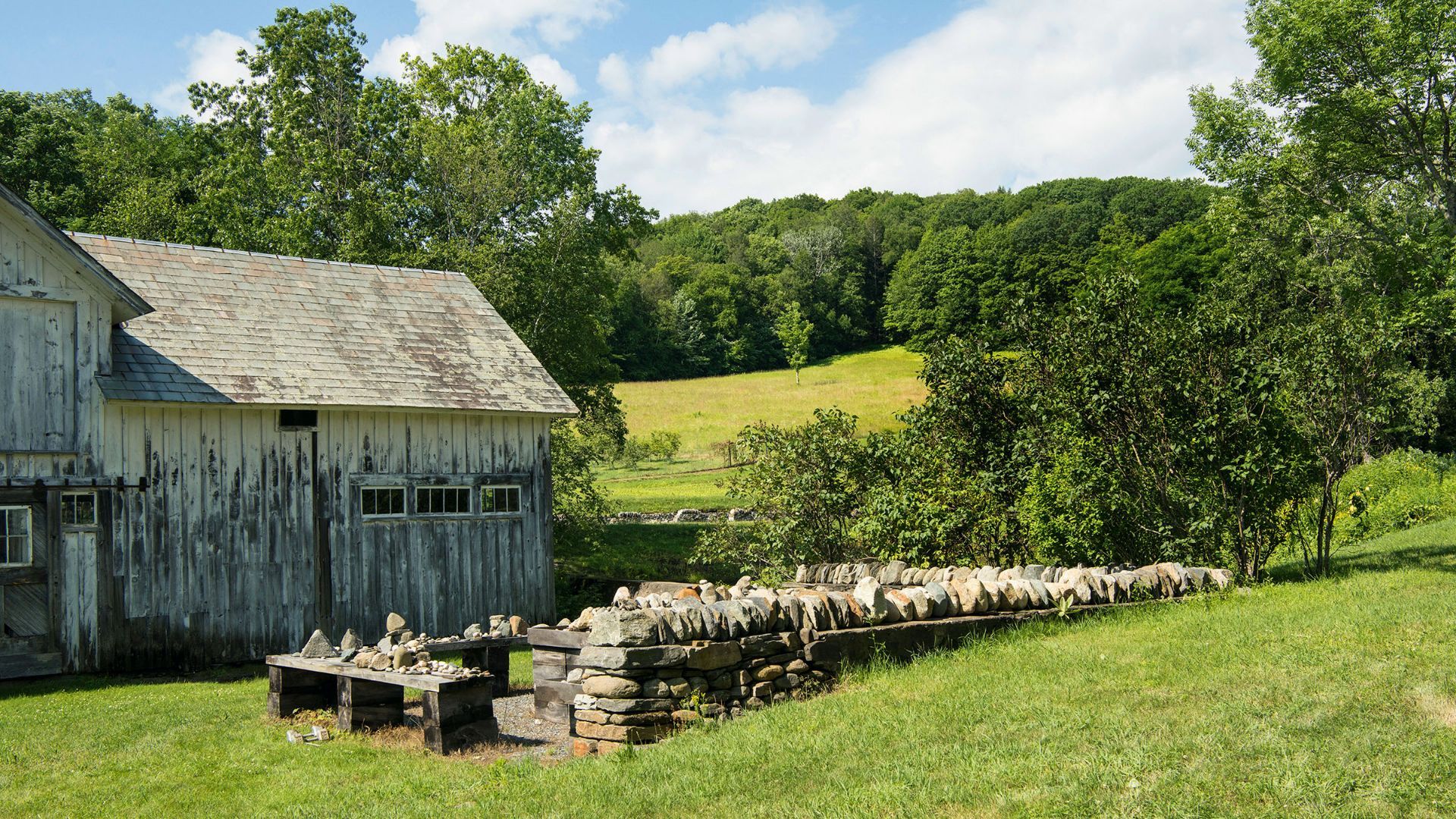
Dry-stone walls (dry because no mortar is used) were once ubiquitous in the Northeast. An 1871 Department of Agriculture report tallied 4,06,422 kilometres of walls in New England and New York, according to Susan Allport’s 2012 book, Sermons in Stone. The walls divided fields, penned in sheep, and marked property lines (often divesting Native Americans of land access). They look almost organic, but while natural forces—notably glaciers—may have delivered the stones here, it took millions of man-hours to dig up, haul, and stack them. Today the walls still curve along roads or rise unexpectedly in woods, a testament to the days when New England was one of a new nation’s agricultural mainstays.
The workshop was scheduled for a Saturday in July; my husband, Alex, and I drove up from Brooklyn a few days early to explore the Brattleboro area. The hills, dips, and forests of the Connecticut River valley were green, when we could see them, relentless rain marking most of the visit. We were staying at the Dutton Farmhouse (INR 34,810 per night), a Greek Revival building in the tiny town of Dummerston, just across a covered bridge from Brattleboro. Built around 1845, the four-bedroom farmhouse overlooks meadows, orchards, and, in the distance, New Hampshire’s Mount Monadnock.
Along with four other properties in southern Vermont, the farmhouse was turned into a vacation rental by the Landmark Trust USA, an offshoot, founded in the early 1990s, of the much larger Landmark Trust in the United Kingdom. The star among the five is Naulakha (INR 47,656 per night), a three-story Shingle Style house designed by Rudyard Kipling in 1892, when he was one of the world’s most famous authors. If you rent Naulakha, you can play pool on the table Kipling bought for the third floor, which has the feel of the Kashmiri houseboats Naulakha was partly modelled on; play tennis on the clay court he built; or read in his study. The Landmark Trust also runs Scott Farm a 571-acre farmstead that dates back to 1791. Originally cultivated for subsistence, the farm now produces more than 130 varieties of heirloom apples.
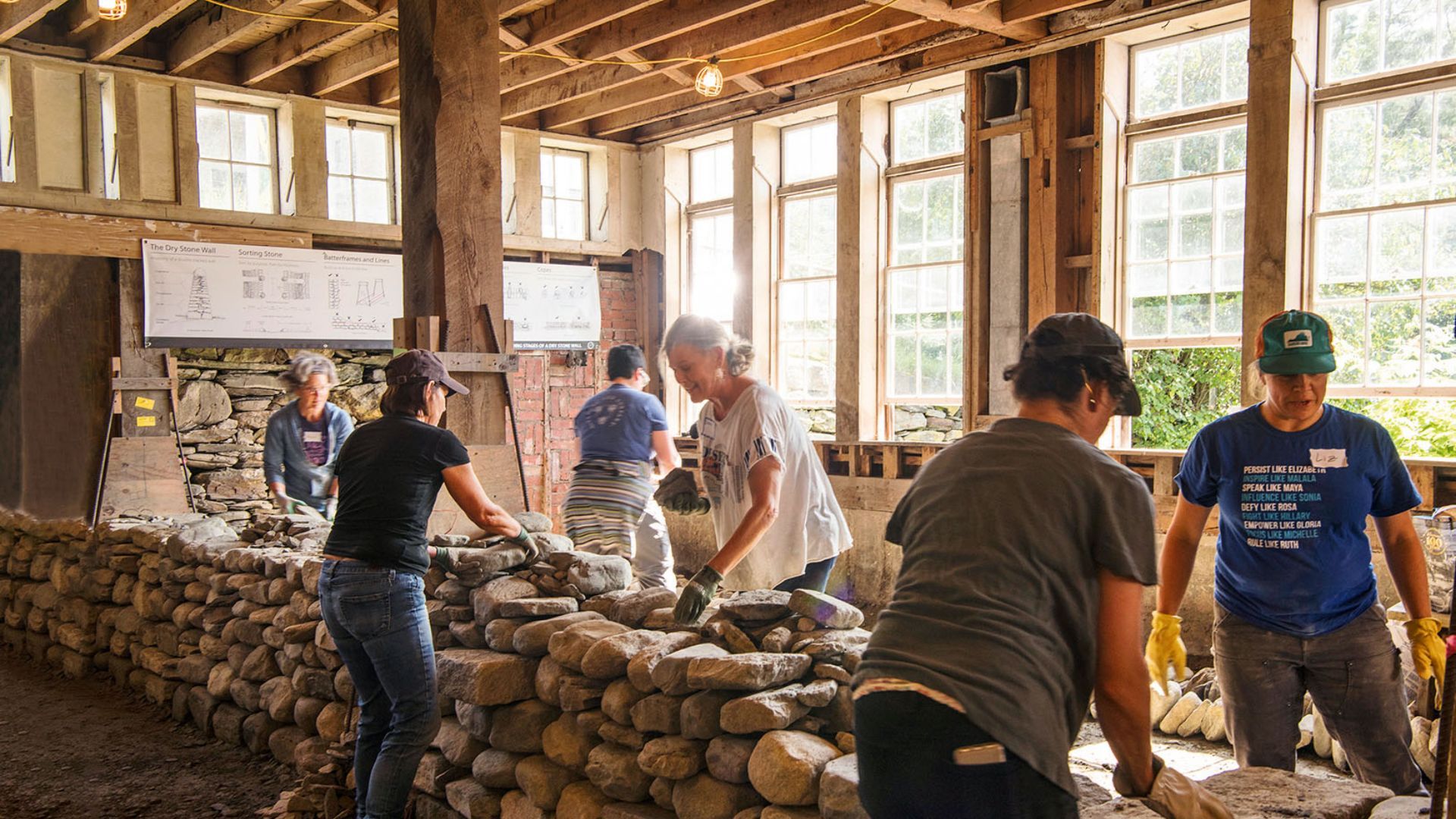
The Stone Trust Center, which was running my wall-building course, leases space on Scott Farm, where I arrived on Saturday morning, work gloves in hand. It was finally sunny, and the farm’s pond and fields glowed in the light. We gathered inside an old barn that had been converted into a workshop. My classmates included a prop stylist from Brooklyn, a landscape designer from New Hampshire, and the head of a research lab at Harvard Medical School. Many owned properties on which they wanted to build stone walls or repair rubbled ones.
The trust runs numerous courses; the one for women is meant to encourage new entrants into a historically male-dominated field. Our instructors, Judy Rand and Hilary Dees, along with volunteer Victoria Merriman, represented three of the four women in the United States who’ve been certified as Level 2 dry-stone wallers.
Needless to say, we students were a long way from any such mastery, but we had to start somewhere. Working in teams of four or five, we began by learning how to avoid pinched fingers (easier said than done) and by dismantling the walls previous workshops had built and laying the heavy stones out on the ground. As Allport wrote: “No two people will build a wall quite the same way; given identical piles of rocks and fifty wall builders, one could wind up with fifty different walls.”
By the end of the day, we’d learned how to “heart” (pack small stones around each large stone to stabilise the wall); “batter” (slightly narrow the width of the wall as it rises, using steel and string, so that stones will move inward as they shift); layer stones (one on two or two on one); and more. The atmosphere was alternately jolly and meditative— and sometimes competitive. Yes, perfectionist team next to us, we saw you swipe that flat stone!
At lunchtime we toured the features of the trust’s Stone Park: retaining walls, a small tower, arches, embedded steps—the work of master craftspeople whose skill is so developed they can play with stone. We, in contrast, were aiming for mere completion. We knew what we’d built would be dismantled by the next workshop. We posed proudly next to it anyway.
The next morning, I was only a little sore. I hiked up the nearby Black Mountain Trail, then, as a reward, drove to Green Mountain Orchards, in Putney, for doughnuts. Seeing my Stone Trust T-shirt, the proprietor suggested that I check out the recent creation in the orchard across the road. On the crest of a hill I found a 16-foot-high stone wall with a moongate—an open circle, seven feet in diameter—at its center. (The wall was designed and built by Jared Flynn, a founder of the trust, with Seth Harris and Brian Post.) Standing inside the opening, I contemplated the enormous rock over my head, held in place only by friction and gravity. My terror that it would fall and crush me was outweighed by my trust that it wouldn’t.
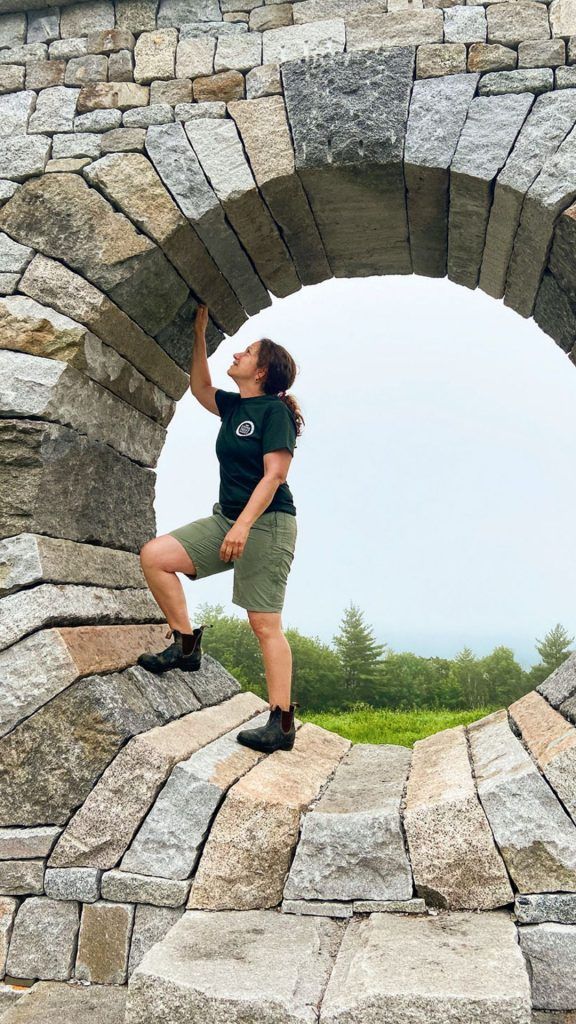
On a clear day the moongate can frame a mountain vista or a circle of blue sky. This wasn’t a clear day: in the distance I saw nothing. I walked to the other side and saw, through the opening, towering trees rising through the mist. A primeval circle; a transfixing sight. The stone seemed to radiate the enormous power that held it in place—a material force that became, as the moments stretched on, almost mystical.
Getting To Vermont
United Airlines operates various connecting flights from major Indian cities such as New Delhi, Mumbai, and Bengaluru, to Vermont.


